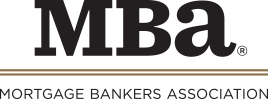
NIC: More Older Americans Move Into Senior Housing

(Image courtesy of RDNE Stock project/pexels.com)
The National Investment Center for Seniors Housing & Care, Annapolis, Md., found the senior housing occupancy rate increased from 87.3% in Q1 to 88.1% in Q2.
The number of occupied units increased from 619,800 in Q1 to 625,800 in Q2. The number of newly available senior housing units was the lowest since NIC began its report in 2005–there were only 809 new units in Q2, less than 1% inventory growth year-over-year.
The occupancy increase is led by a heightened demand for independent living properties–essentially rental properties for older adults who don’t have ongoing long-term care needs.
The rate for those communities was up 0.8 percentage point to 89.7%. That compares with the 0.7 percentage point increase for assisted living properties–currently at 86.4%.
This marked the third consecutive quarter in which occupancy rate gains for independent living outpaced gains in assisted living.
Active adult rental communities–featuring downsized properties but without the services provided in independent living–were 92.3% occupied in Q2.
“The youngest Baby Boomers have turned 60 and the oldest are approaching 80, so this group is starting to make decisions about how and where they want to age,” said Caroline Clapp, Senior Principal at NIC. “Baby Boomers appear to prioritize mental, physical and social wellness, and they’re choosing to move into independent living and active adult communities because that lifestyle is baked into the experience.”
Prices for independent living communities were up 4.25% year-over-year to $4,402 a month, compared with 3.97% across assisted living communities, now at $6,976 per month.
